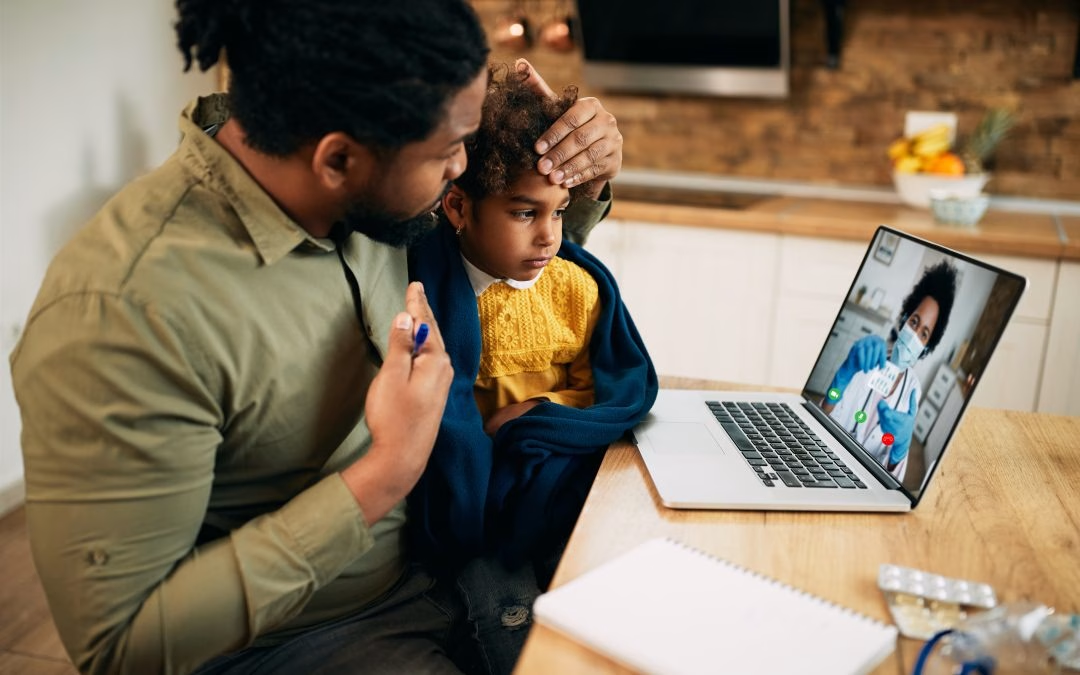
Hand, foot, and mouth disease (HFMD) is a common viral illness that primarily affects young children but can also occur in older children and adults. It is known for its uncomfortable symptoms, which include a rash, mouth sores, and fever. Parents are often concerned about how long these symptoms will last and what they can do to help their child recover. In this blog, we will explore what HFMD is, the typical duration of symptoms, and when to seek medical attention at AFC Hixson. We’ll make sure your child is back to enjoying their favorite activities in Hamilton County.
What is Hand, Foot, and Mouth Disease?
HFMD is caused by a group of viruses, most commonly the coxsackievirus A16 and enterovirus 71. The illness spreads through close personal contact, respiratory droplets, and contact with contaminated surfaces. It is highly contagious, particularly in childcare settings, playgrounds, and schools where young children are frequently near one another.
The virus primarily affects children under the age of five, though older children and adults can also become infected. In most cases, HFMD is a mild illness, but it can cause significant discomfort due to its symptoms.
Signs and Symptoms of HFMD
The symptoms of HFMD develop gradually, often starting with a mild fever before progressing into a more noticeable rash and painful sores. These symptoms typically follow a predictable pattern:
- Fever: The first sign of HFMD is often a mild to moderate fever, usually lasting 1-2 days. Some children may also experience fatigue, irritability, and loss of appetite during this stage.
- Sore Throat and Mouth Sores: Painful sores can develop inside the mouth, particularly on the tongue, gums, and inner cheeks. These sores make it difficult for children to eat or drink, which can lead to dehydration if not carefully managed.
- Rash: A rash typically appears 1-2 days after the fever begins, starting as red spots on the hands, feet, and sometimes the buttocks. These spots can turn into small, fluid-filled blisters that may be itchy or painful.
- Other Symptoms: In some cases, children may also experience a sore throat, headache, or a general sense of malaise.
How Long Do Symptoms Last?
The duration of HFMD symptoms varies slightly depending on the individual, but most cases resolve within 7 to 10 days. Here’s a breakdown of how the illness progresses:
- Fever Phase (2-3 Days): HFMD often begins with a low-grade fever that lasts around 2-3 days. During this time, children may also exhibit signs of fatigue and irritability, along with a reduced appetite.
- Rash and Blister Phase (5-7 Days): As the fever subsides, a rash develops on the hands, feet, and sometimes the buttocks. This rash can last anywhere from 5 to 7 days and is often accompanied by blisters. The rash may be uncomfortable but is typically not serious.
- Mouth Sores (7-10 Days): The painful sores inside the mouth can persist for a week or more. These sores are often the most challenging part of the illness, as they make it difficult for children to eat or drink. Ensuring your child stays hydrated during this time is crucial to avoid dehydration.
Most children recover fully from HFMD without any long-term complications. However, the discomfort caused by mouth sores and rash can make the recovery process challenging for both children and their parents.
Factors That Can Affect Recovery
Several factors can influence how quickly someone recovers from HFMD, including age, hydration, and overall health:
- Age: While HFMD is most common in children under five, older children and adults may also become infected. Adults and older children typically experience milder symptoms and may recover faster than younger children.
- Hydration: Staying hydrated is critical during recovery, especially if mouth sores are present. Dehydration can prolong the recovery period and lead to more serious health issues. Offering small sips of water, cold drinks, or ice pops can help keep children hydrated when eating or drinking is uncomfortable.
- Immune System Health: Children with weakened immune systems may take longer to recover from HFMD, and their symptoms may be more severe. These children are also more susceptible to complications, so close monitoring is important.
When Should You Seek Medical Care?
Most cases of HFMD resolve on their own within 7 to 10 days, but there are situations where seeking medical attention is necessary. You should bring your child to AFC Urgent Care Hixson if:
- The symptoms last longer than 10 days.
- Your child has signs of dehydration, such as not urinating frequently, dry mouth, or sunken eyes.
- Your child is unable to eat or drink due to severe mouth pain.
- A very high fever develops (over 102°F) or persists for more than a couple of days.
- Your child is in significant pain or seems unusually lethargic.
At AFC Urgent Care, we can assess your child’s symptoms and recommend treatments to alleviate discomfort. While there is no specific antiviral treatment for HFMD, we can offer supportive care, such as recommending over-the-counter pain relief medications or addressing dehydration concerns.
Hand, foot, and mouth disease is a common viral illness that typically resolves within 7 to 10 days. While it can be uncomfortable, especially for young children, the illness usually does not cause serious complications. By keeping your child hydrated, managing fever and pain, and monitoring their symptoms, you can help them recover as smoothly as possible.
However, if symptoms persist or your child is showing signs of dehydration or severe discomfort, don’t hesitate to visit AFC Hixson. We are here 7 days a week to provide fast, compassionate care for your child when you need it most.


